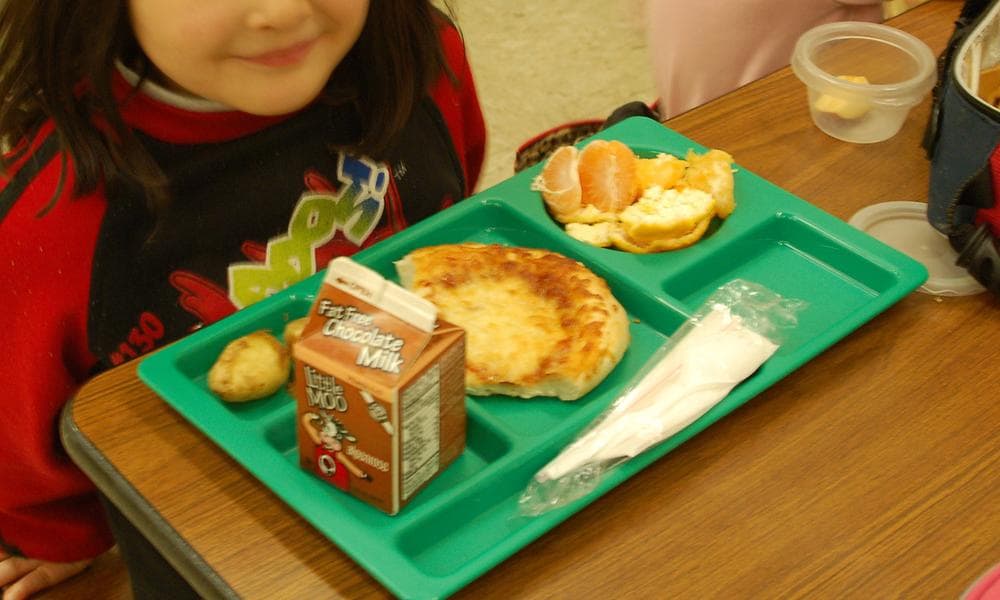Advertisement
Back To School, And To Controversy Over Lunch
Just in time for the start of school, the Associated Press reports that schools have been dropping out of the $11 billion National School Lunch Program, which increased "the availability of fruits, vegetables, and whole grains in the school menu," according to the program's fact sheet. The national lunch program gave school districts reimbursements for each meal that fit its guidelines.
"Some of the stuff we had to offer, they wouldn't eat," Catlin, Ill., Superintendent Gary Lewis told the AP. He said his school district saw a 10-12% drop in lunch sales, translating to $30,000 lost under the program last year.
The new guidelines set limits on calories and salt, phase in more whole grains and require that fruit and vegetables be served daily. A typical elementary school meal under the program consisted of whole-wheat cheese pizza, baked sweet potato fries, grape tomatoes with low-fat ranch dip, applesauce and 1 percent milk.
The AP reports that 1% of the nation's districts had plans to drop out of the federal program, and a further 3% were considering it due to costs and complications with implementation.
Dr. Janey Thornton of the USDA posted a followup, countering the AP story by saying the "vast majority" of schools were successfully following the program's tighter guidelines. As proof, Thornton linked to "success stories" from each of the 50 states. However, a closer look showed most of these stories to be brief snapshots or anecdotes. The link for Massachusetts, for instance, discusses the Somerville school district "Farm to School" program. It's a colorful story, but it says nothing about larger nutrition issues, such as the availability of sodas and snack foods in schools and the types of foods that schools can serve at lunch.
For that, the CDC has you covered: they released a report this week looking at school nutrition trends nationally in 2012. Some highlights: only 60% of school districts allowed selling soft drinks at any venue, down 20% from 2006. Of the schools that did sell soft drinks (and have less of an incentive to cut down on students drinking sodas), 70% received a portion of the sales - still high, but down 12% from 2006. 68% of school districts made nutritional information available to students - up 22% from 2000. And school cafeterias are increasingly using healthy preparation techniques, such as skimming fat off soups and choosing low-sodium canned vegetables.
This program aired on August 29, 2013. The audio for this program is not available.